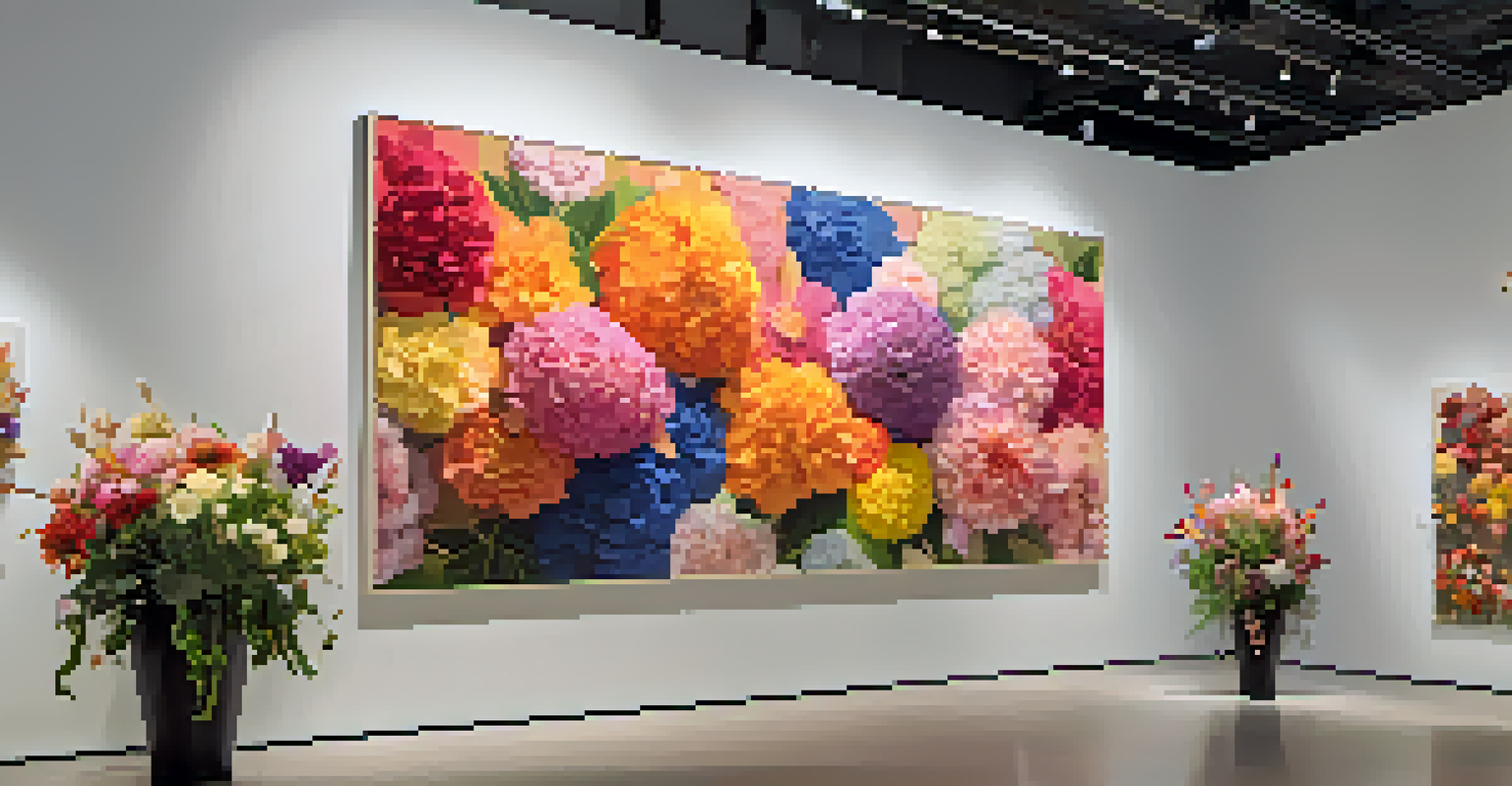The Significance of Scale in Sculpture vs. Carving Art Forms

Understanding Scale in Artistic Contexts
Scale in art refers to the size of an object relative to its surroundings. It's a crucial aspect that significantly affects how a viewer perceives a piece of art. Whether in sculpture or carving, the scale can evoke emotions, create impact, or even alter the narrative of the artwork.
The scale of a work of art can transform the viewer's experience, evoking feelings of awe or intimacy depending on its size and context.
For instance, a large sculpture can dominate a space, drawing attention from afar and creating a sense of awe. Conversely, intricate carvings, often smaller in size, invite viewers to come closer and appreciate the details. This contrast illustrates how scale can shape the viewer's experience and interaction with the art.
Ultimately, understanding scale helps both artists and audiences appreciate the depth and intention behind various art forms, laying the groundwork for a deeper exploration of sculpture and carving.
The Role of Scale in Sculpture
In sculpture, scale often embodies the artist's intent and the message they wish to convey. A towering statue can represent power or grandeur, while a smaller piece may evoke intimacy or fragility. For example, think of the Statue of Liberty—its colossal size symbolizes freedom and hope, making it a landmark of immense significance.

Moreover, the scale of sculptures can influence their placement in public spaces. Large works can serve as focal points in urban settings, inviting interaction and engagement. This relationship between scale and environment further enhances the narrative that the sculpture aims to tell.
Scale Shapes Viewer Experience
The size of art pieces, whether large sculptures or intricate carvings, significantly influences how viewers perceive and interact with the artwork.
Thus, the scale in sculpture not only affects aesthetic appeal but also deepens the connection between the artwork and its audience.
The Impact of Scale in Carving
Carving, often characterized by its meticulous detail, conveys a different relationship with scale. Smaller carvings can tell intricate stories, drawing viewers in with their complexity. For instance, consider a tiny wooden figurine; its small size often invites close inspection, revealing the artist's skill and the story behind each detail.
Art is not what you see, but what you make others see, and scale plays a pivotal role in that perception.
Unlike large sculptures that command attention from a distance, carvings often invite an intimate experience. This allows for a personal connection, as the viewer must engage closely to appreciate the nuances. The scale here enhances the narrative, creating an experience that feels more personal and reflective.
In essence, the scale in carving adds layers to the storytelling and emotional resonance of the piece.
Comparing Scale: Emotion and Experience
The emotional response elicited by scale varies significantly between sculpting and carving. Large sculptures can inspire feelings of awe and grandeur, while small carvings often evoke introspection and nostalgia. This emotional dichotomy illustrates how scale can influence our connection to art.
Imagine standing before a grand statue, feeling its weight and presence; now think of holding a finely carved trinket, feeling its craftsmanship in your hand. Each experience is unique, shaped by the scale of the art form. This contrast is essential in understanding how we relate to different artworks.
Cultural Context Influences Scale
Different cultures use scale in art to convey distinct messages, showcasing the diversity of artistic expression and societal values.
Ultimately, the emotional impact of scale fosters a deeper appreciation for both sculpture and carving, allowing us to connect with art in diverse ways.
Cultural Perspectives on Scale in Art
Cultural contexts play a significant role in how scale is perceived in art forms. Different cultures emphasize different scales to convey messages or values, shaping the viewer's understanding. For instance, in some cultures, monumental sculptures symbolize divine presence, while in others, small carvings signify personal devotion or storytelling.
These cultural nuances highlight how scale can serve as a bridge between art and societal values. Understanding these perspectives enriches our appreciation for both sculptures and carvings, showcasing the diversity of artistic expression worldwide.
By exploring these cultural implications, we can recognize the importance of scale as not just a physical attribute but a narrative device that speaks volumes about human experience.
The Technical Aspects of Scale in Art Creation
Creating art at different scales involves distinct technical considerations. Sculptors often contend with structural integrity and material limitations when working on large pieces, requiring careful planning and execution. Conversely, carvers must focus on detail and precision, as their medium often demands meticulous craftsmanship.
The tools and techniques used also vary significantly based on the scale of the work. A sculptor may use heavy machinery for large sculptures, while a carver might rely on hand tools for intricate detailing. This technical divergence underscores the unique challenges and skills involved in both art forms.
Technical Challenges of Scale
Creating art at various scales involves unique technical considerations, from structural integrity in sculptures to precision in carvings.
By understanding these technical aspects, we can appreciate the craftsmanship behind both sculpture and carving, recognizing the dedication and skill required to master each form.
Future Trends: Scale in Contemporary Art
As we look to the future, the significance of scale in art continues to evolve. Contemporary artists are experimenting with hybrid forms that challenge traditional notions of size and space. From oversized installations that engulf spaces to miniaturized pieces displayed in unexpected contexts, the exploration of scale is dynamic and compelling.
Artists are also using technology to push boundaries, creating immersive experiences that alter our perception of scale. Virtual reality, for instance, allows viewers to experience art in ways previously unimaginable, blurring the lines between sculpture and carving. This innovation introduces new narratives and interactions that redefine how we engage with art.

As trends evolve, the ongoing dialogue about scale invites us to reconsider our understanding of both sculpture and carving, ensuring that the conversation around these art forms remains vibrant and relevant.